A group Late Autumn single day tour in North Norfolk today. It was a cloudy start, but with some nice spells of late autumn sunshine. There was a brisk WNW wind with a bit of a chill to it this morning, but it eased off during the day.
There had been some Waxwings at Wiveton yesterday, and with the news that a small group was still present there this morning, we decided to call in first thing on our way to the coast. As we got out of the minibus in the car park, we could see the Waxwings perched in the top of a large tree on the other side of the green. We got them in the scope and had a look from here, just in case they should fly off before we got across.
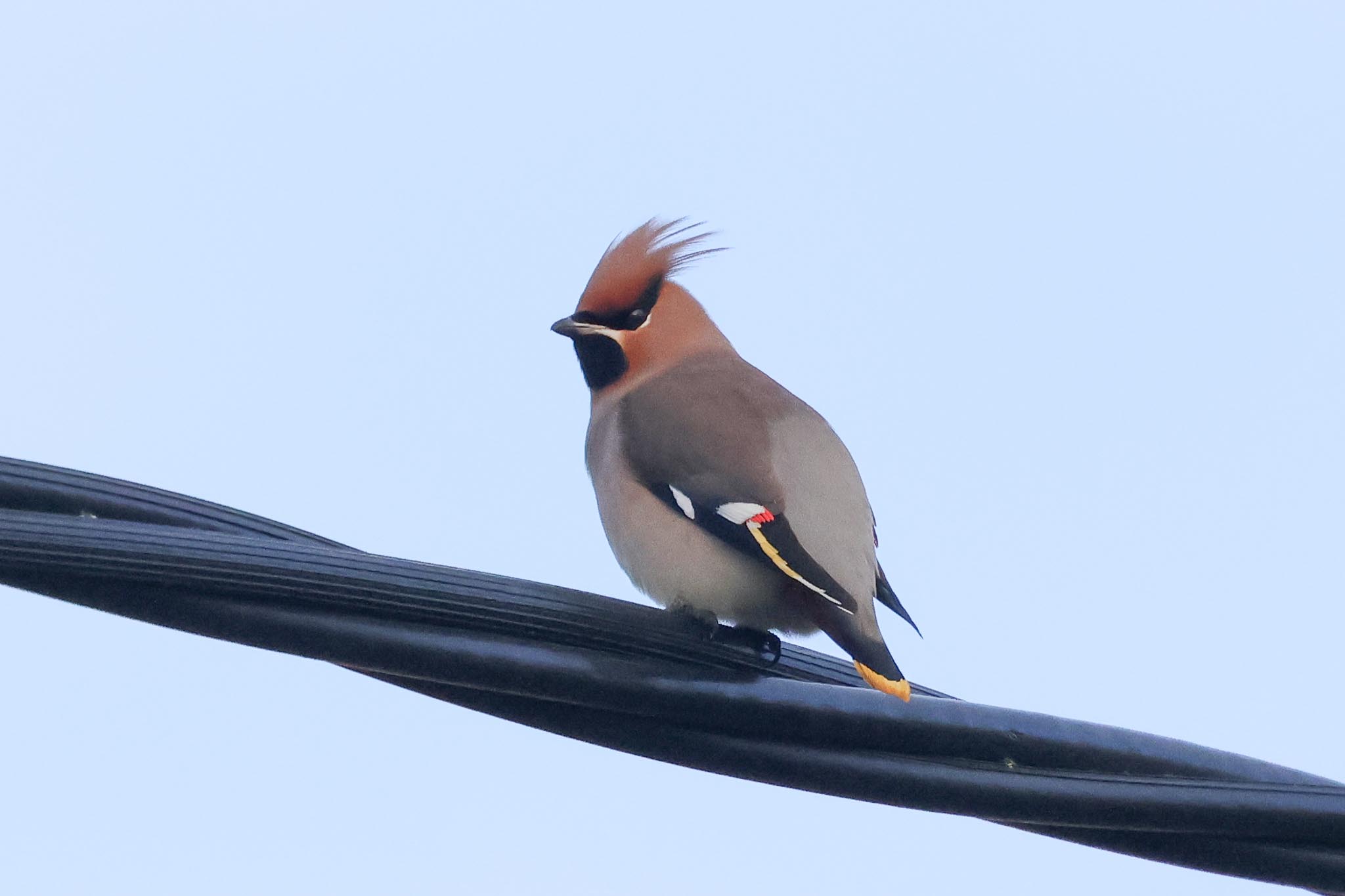
Once everyone had a look at the Waxwings, we walked across the green and got the scope on them again. It wasn’t long before they dropped down to feed in the cotoneaster in the back garden of the pub, a couple of them landing on the wires above first, before joining the others. They quickly gobbled down some berries and then flew back up to the top of the tree. A Mistle Thrush flew past too. Then suddenly the Waxwings were off – they flew up and away over the green, six of them at first, but joined by two more which seemed to come up from the other side. We lost sight of them as they flew off calling over the trees. Perfect timing – they would not be seen again until late afternoon!
It looks like we are about to have a Waxwing Winter, the first for several years, when large numbers of Waxwings come over here from Scandinavia, normally in response to a failure of the berry crop over there. Fingers crossed, that will mean lots more Waxwings to come in the months to come! One of the locals had told us there was a nice bank of Wrinkled Club fungus on the other side of the green, so we walked round for a quick look on our way back to the car park.
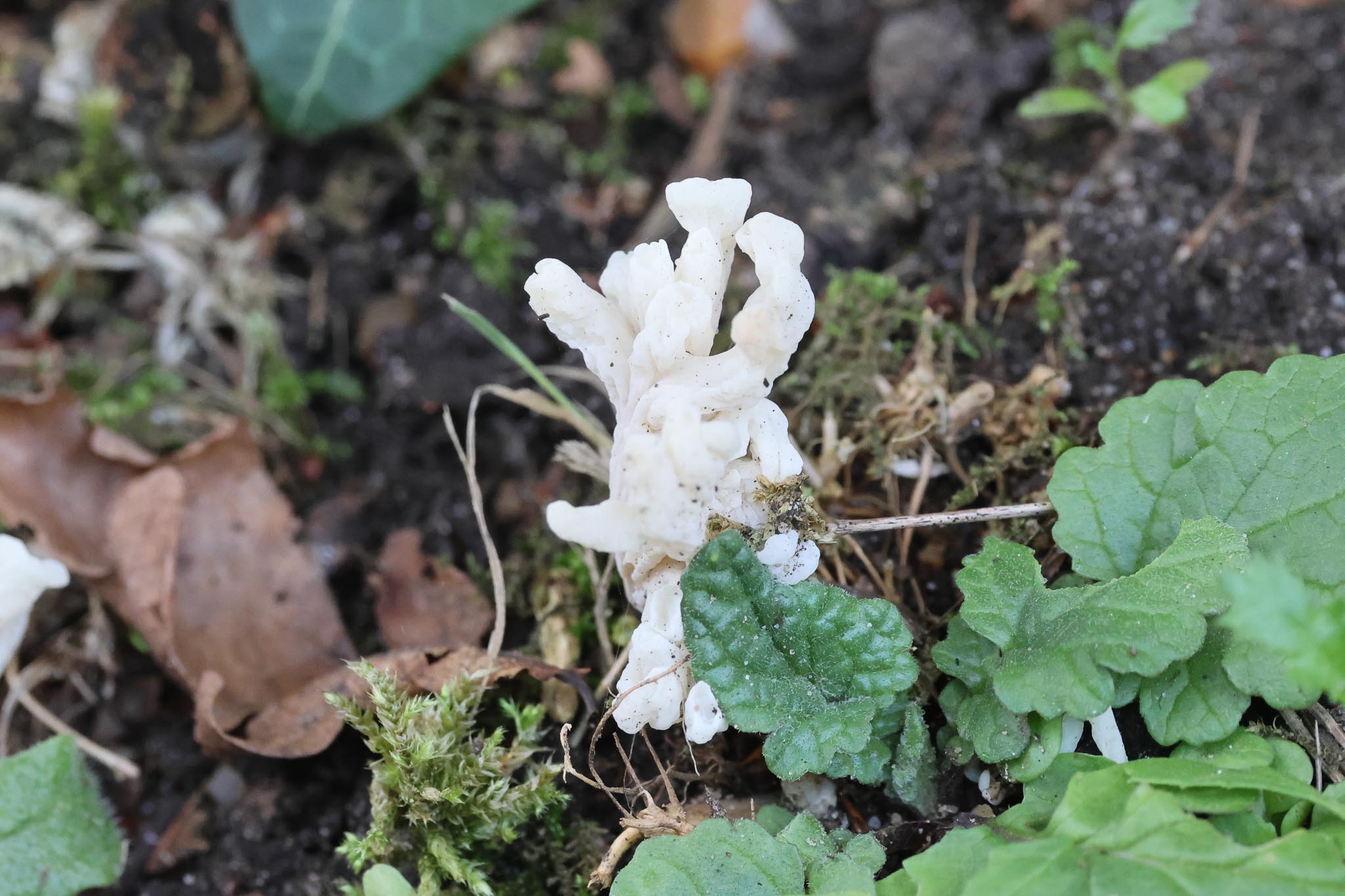
Then we dropped down to the coast and parked in front of Walsey Hills. A pair of Gadwall were on Snipe’s Marsh and a Cetti’s Warbler shouted from the ditch across the road.
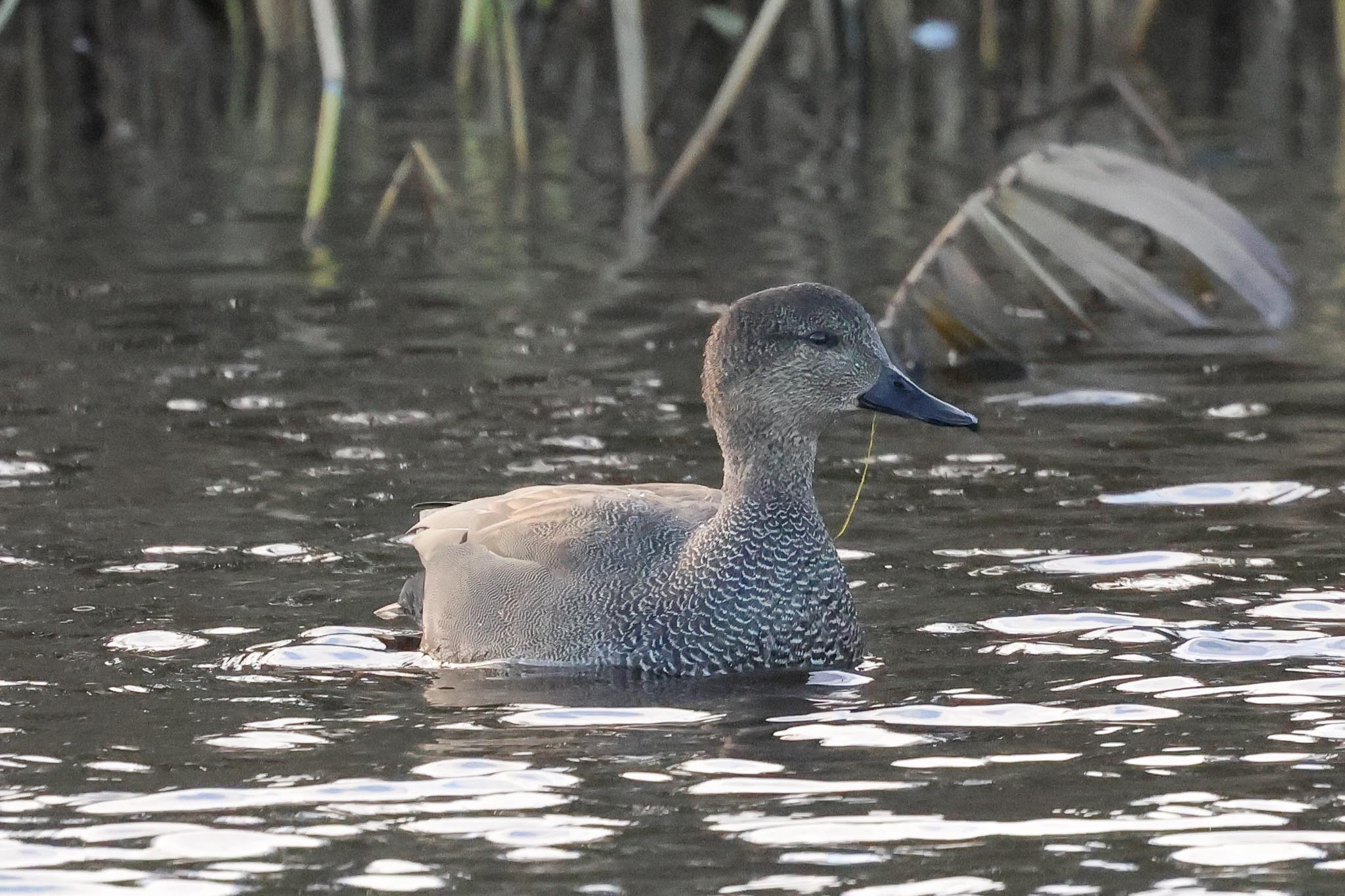
Up on the East Bank, a couple of Marsh Harriers drifted out across the reedbed. There was a nice selection of wildfowl out on the grazing marsh – we stopped to look at some of the Wigeon and listen to them whistling. There were lots of Teal too, plus a few Shoveler and a pair of Shelduck on Pope’s Pool, along with a single female Pintail. There were fewer waders here today – still a few Lapwings out on the grass, four Dunlin on the edge of the Serpentine and a lone Black-tailed Godwit on Pope’s Pool.
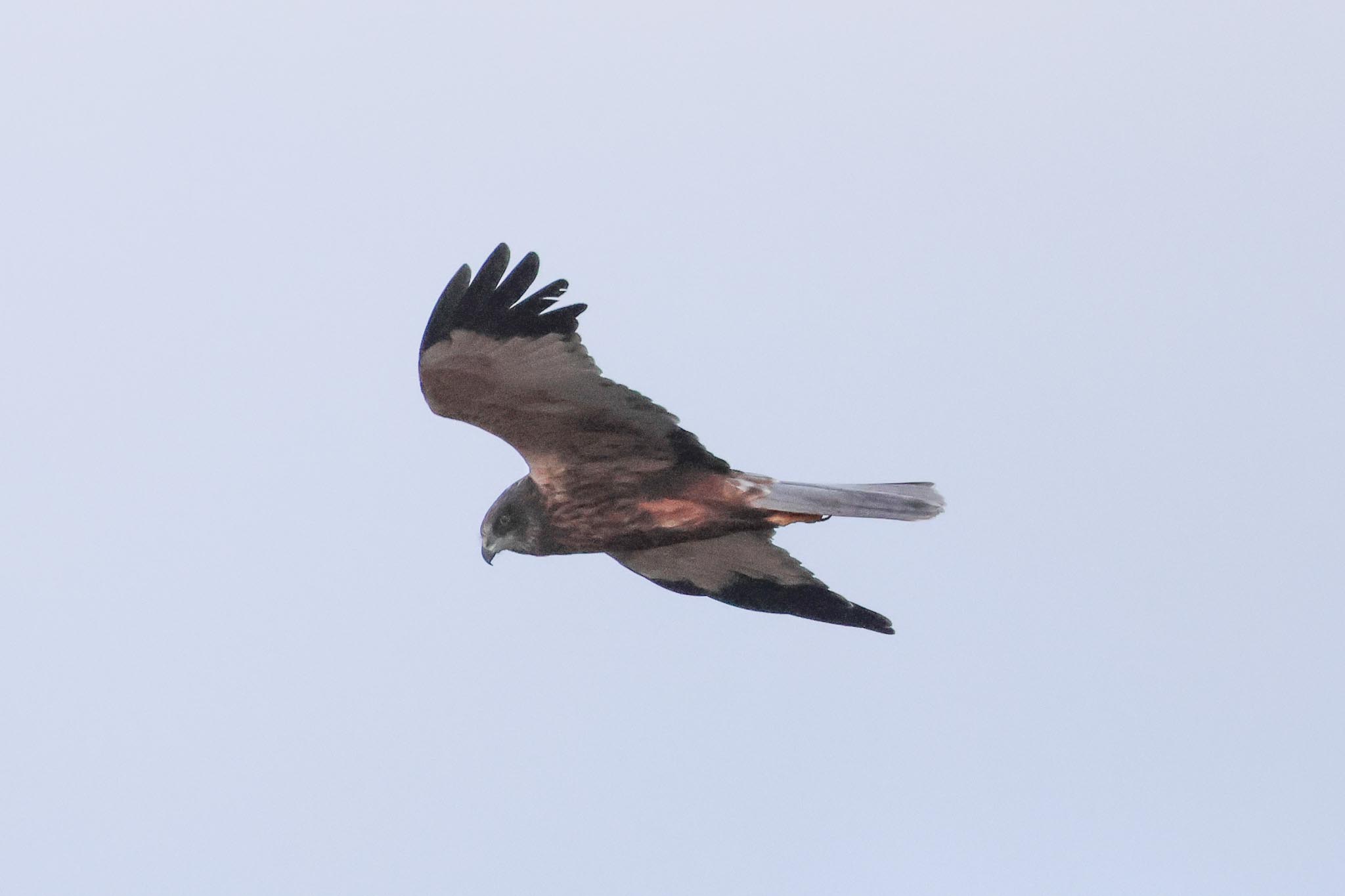
We bumped into a couple of birders from the village by the main drain and were joined by George the Warden from Cley Marshes. We could see all the machinery and piles of spoil out towards North Scrape and as we hadn’t yet discussed the works which are currently underway, George very kindly gave us a short explanation. It all sounds very exciting, particularly the prospect of a new hide overlooking a rejuvenated North Scrape!
A drake Pintail flew over the bank and dropped down on the Brackish Pools and as we walked on we could see several around the water. One drake was busy upending and we could see that it had not yet finished growing its long pin tail. Twelve Little Grebes were out on the water too. Arnold’s Marsh is very full with water at the moment, and apart from more ducks, all we could add was a Curlew asleep at the back.
There were a few birds moving this morning. As we walked out, a succession of small flocks of Starlings flew over and continued on away to the west, presumably freshly arrived from the Continent for the winter. Several Skylarks flew over too and a single Rock Pipit – they have all been coming in off the sea in recent days too, so at least some of them were presumably active migrants.
It was cold out on the beach in the breeze. We had a look out to sea, but despite the WNW wind there was very little apart from gulls moving now. A Great Crested Grebe and a single Razorbill flew past, but there didn’t seem to be anything much on the water today. We had a good scan up and down the shingle bank but all we found was a single Stonechat. There were quite a few people walking up and down and no sign of any Snow Buntings. We decided to head back and get out of the wind.
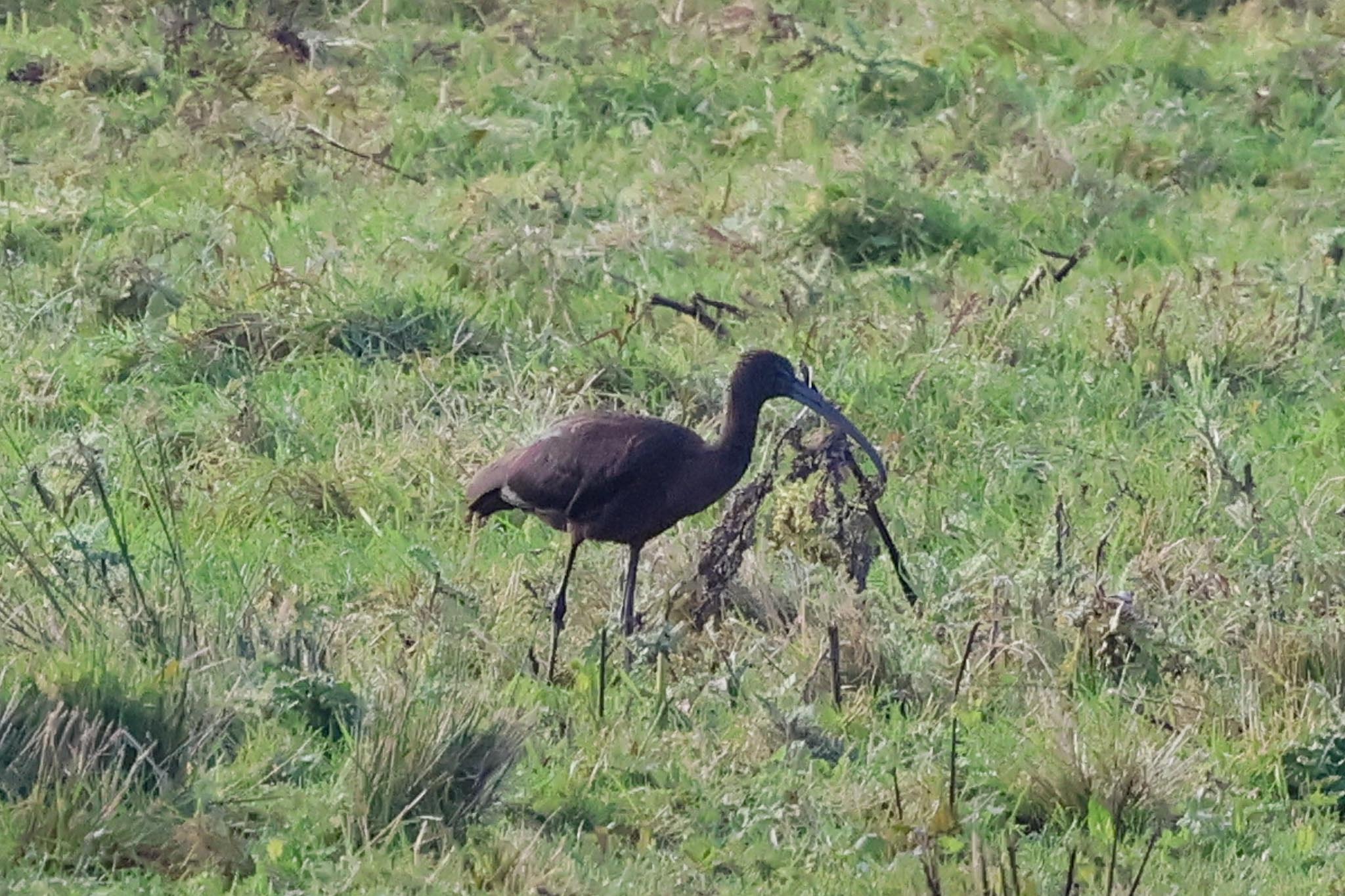
Next, we drove west and stopped just before Stiffkey. We walked down along the permissive path to the corner of the flood and scanned, quickly locating the Glossy Ibis which was feeding out on the wet grass. It was joined at one point by a Curlew – we admired both their long, downcurved bills. Otherwise, there were lots of Wigeon and Teal and a small gaggle of Greylags out on the flood. We had a quick look further down the footpath, put could only find a pair of Egyptian Geese and half a dozen Redshanks, so decided to move on west.
Our next stop was at Wells. After a short break to get a coffee at the Beach Cafe and use the facilities, we walked up to the harbour. The tide was out but we could immediately see the two Common Scoter asleep down in the channel. Scanning further up, we found two Shags and after a while, a single Red-throated Diver appeared too, all diving continually. One of the Shag eventually walked out onto the shore just beyond the channel and we could see that it was colour-ringed. There have been lots of Shags displaced south down the North Sea this winter so far, most that have been ringed have been from colonies in the Firth of Forth, so it will be interesting to find out where this one had come from. A single Common Seal was floating out in the middle.
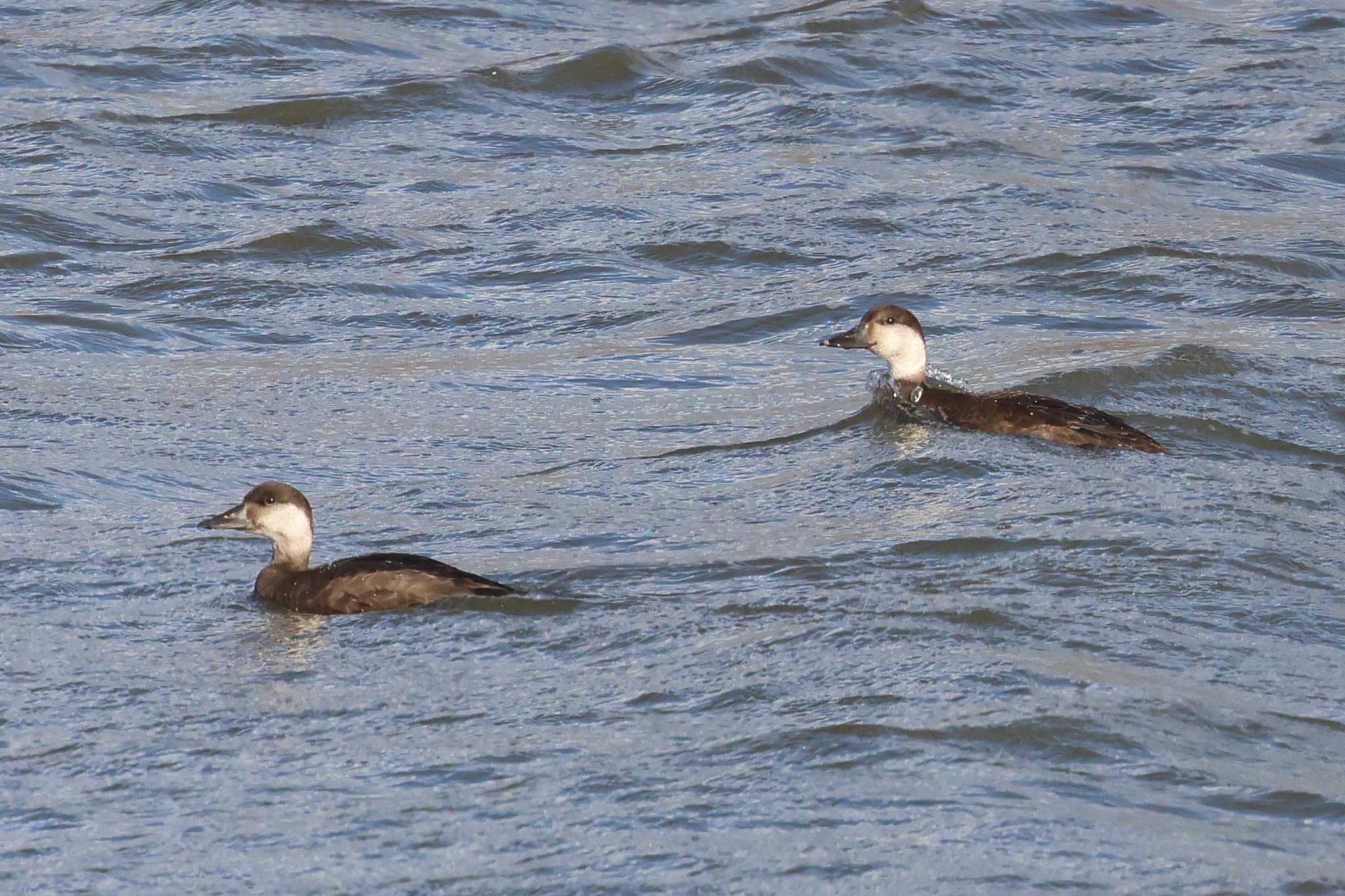
There were lots of waders out on the mud. The highlight was a single Greenshank in the edge of the water opposite, a scarce wintering species here, with a small group of Redshanks. There were a couple of smart Bar-tailed Godwits and a Grey Plover on the near bank in the sunshine. Scanning the other side of the water, we could see lots of Oystercatchers and Turnstones, a few Knot and Dunlin, and a few Ringed Plover. There were several Sanderling on the sand way out towards the beach, then one appeared on the edge of the water the other side of the entrance to the moorings, where we could get a much better look at it as it ran around on the sand like a clockwork toy.
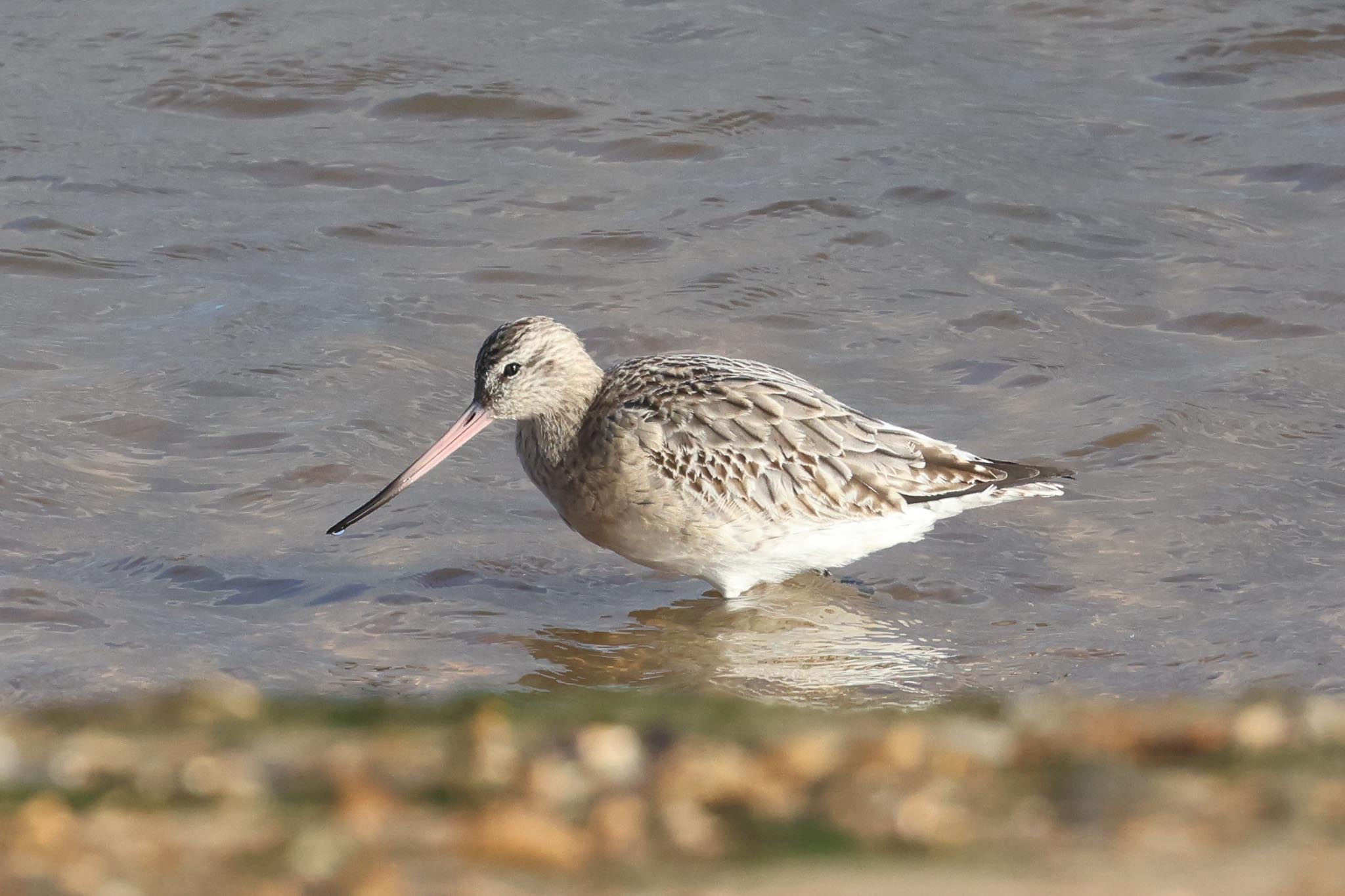
There were lots of Common Gulls and Herring Gulls out on the mud across the harbour, and several of them were picking up shellfish from the beach. They kept flying up a short way and dropping it onto the shingle below, hoping to break it. It seemed to take several goes before they managed to crack into them. Five Red Kites were chasing each other round over the edge of East Hills.
There were lots of Brent Geese loafing around in the channel back towards town – we had a quick scan through them as we drove past the quay earlier, to see if one of the Red-breasted Geese might be with them. Now we walked back halfway along the harbour wall towards Wells to have a better look, but we still drew a blank. There were more Brent Geese on the saltmarsh beyond, but we couldn’t see anything different in with them either. It was time for lunch, so we headed back to the Beach Cafe and made use of the picnic tables there.
After lunch, we drove on west to Holkham. Scanning the grazing marshes, the first thing we found was a Great White Egret out on one of the small pools. After a while it flew, chasing a second Great White Egret up from further over and the two of them flying back to the trees. Most of the cattle seem to have been brought inside already, but we could see a distant herd still. We scanned around the feet of those we could see, but there was nothing white obviously with them. Then a little while later, we picked up a Cattle Egret flying past in the distance, which then passed another one heading in the opposite direction.
Looking through the Greylags we found a few White-fronted Geese in with them. Through the scope, we could see the white surround to their pink bills and the black belly bars on the adults. A small group of Pink-footed Geese flew over calling and disappeared off inland. There were several Chinese Water Deer out on the grass too and we saw several Common Buzzards and a couple of Marsh Harriers, plus two Sparrowhawks which came out of the trees.
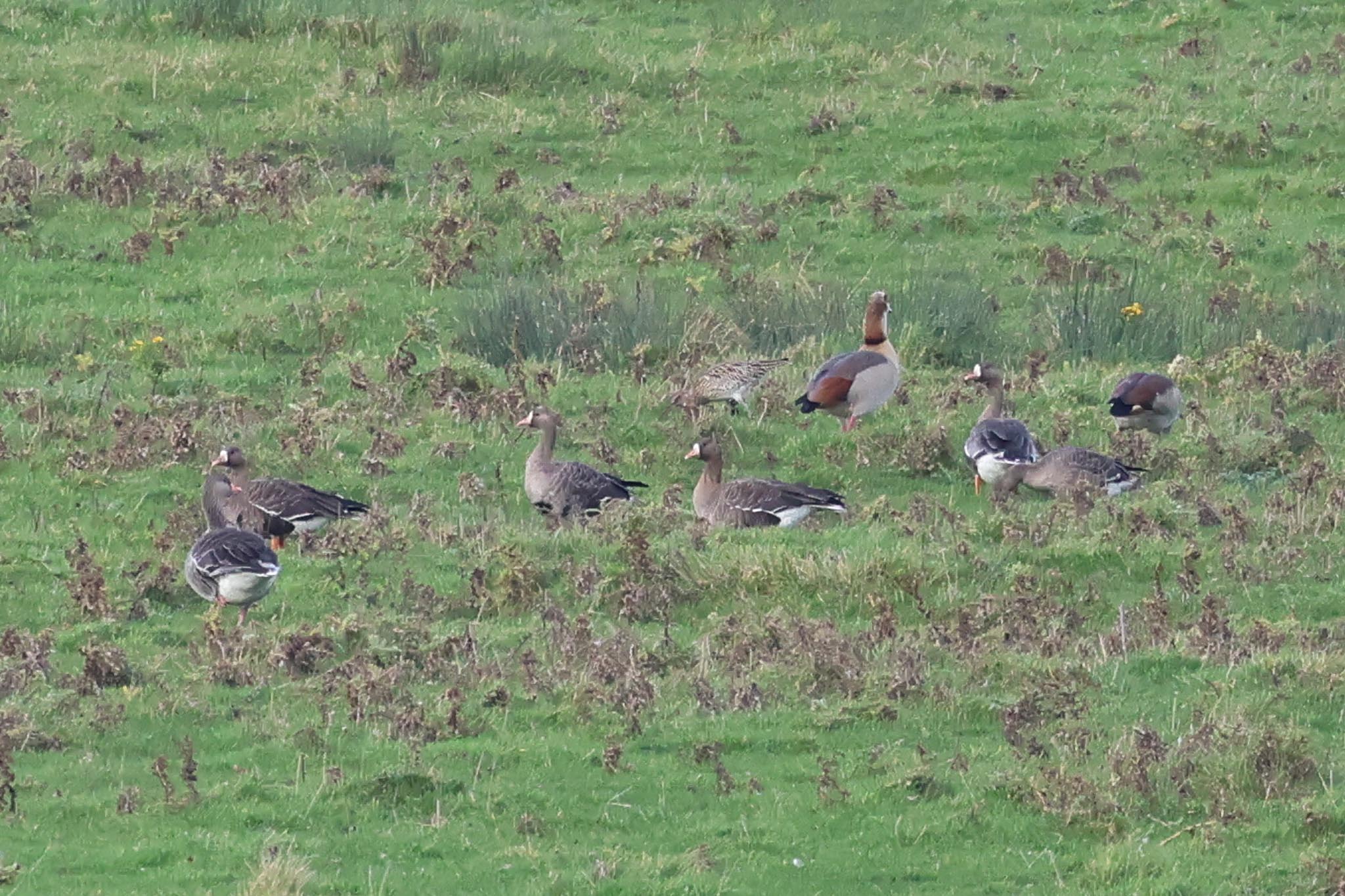
A few finches kept flying round and landing briefly in the tops of the trees, before dropping down out of view, presumably to feed. At one point, a single Brambling appeared with a Greenfinch, and then a small flock of Siskin dropped in. A tit flock came through the bushes and past us too, Long-tailed Tits, Blue Tits and Great Tits, and a Goldcrest flew between us into the hedge the other side. A flock of Stock Doves came up too and circled round, before disappearing off east.
Our last destination for the afternoon was Warham Greens. As we got out onto the edge of the saltmarsh, there were already several people scanning. Apparently, no one had managed to find either of the Red-breasted Geese with the Brent Geese out here either. We walked a bit further east, stopping to look at a Redwing which perched up briefly in the hedge. Several small flocks of Golden Plover came up from the fields inland and overhead, before dropping down out on the saltmarsh. There were also Little Egrets, Curlew, Redshank and three Grey Plover around the pools, as well as several more small groups of Brent Geese.
There were a few Marsh Harriers out over the far edge of the saltmarsh, but otherwise little raptor activity at first this afternoon. It seemed like, with the nice weather, the birds were taking advantage to stay out hunting later. We did have a brief Merlin which shot out low over the saltmarsh, before turning and disappearing off east.
We made our way back to where the others were standing, and were just walking up when someone called out ‘it’s up’. We turned to see a ringtail harrier heading straight away from us, before landing out on the saltmarsh again. The Pallid Harrier had apparently reappeared a little earlier and just flown up again. We got the scope on it, before it took off again, flying further back and this time landing out of view.
A few more Marsh Harriers came in, but there was no further sign of the Pallid Harrier for a bit. We figured it still needed to fly to its roost site, so we waited a little longer. Then we heard Pink-footed Geese calling behind us and as they got louder we realised there were skeins and skeins, several thousand of them. They came high overhead before whiffling down towards the sands. We watched them landing on the beach through the scope. Amazing to watch.
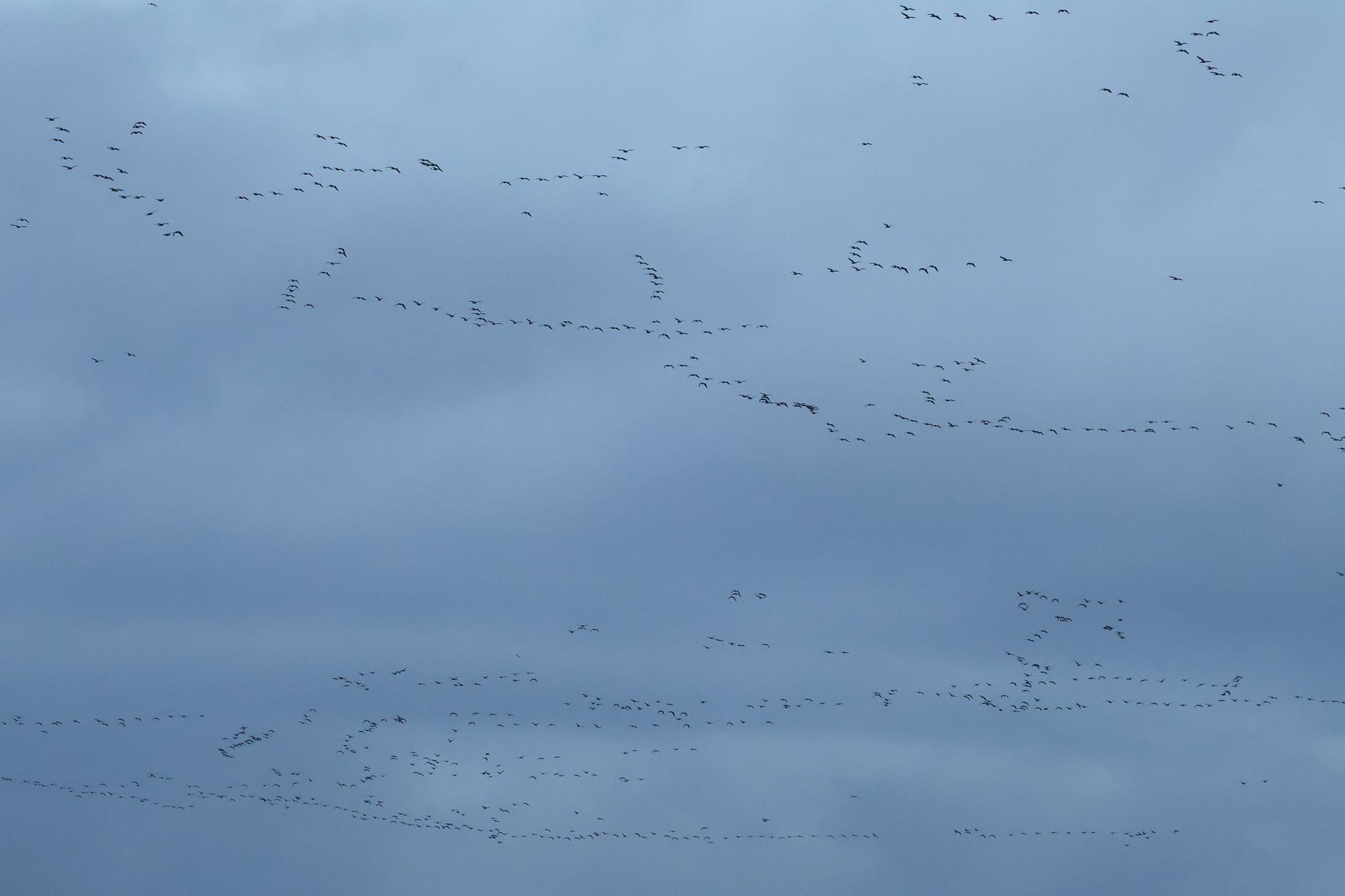
The Pallid Harrier came up again, and flew back further again, dropping down out of view presumably to roost. The light was starting to go now, so everyone decided to call it a day and we walked back to the minibus. There were still more Pink-footed Geese to come though, and as we got back to the concrete pad we stood and watched another huge succession of waves of geese fly over calling. Even as we eventually managed to tear ourselves away, there were still some smaller skeins of Pinkfeet coming in to roost. A stunning end to the day.
















